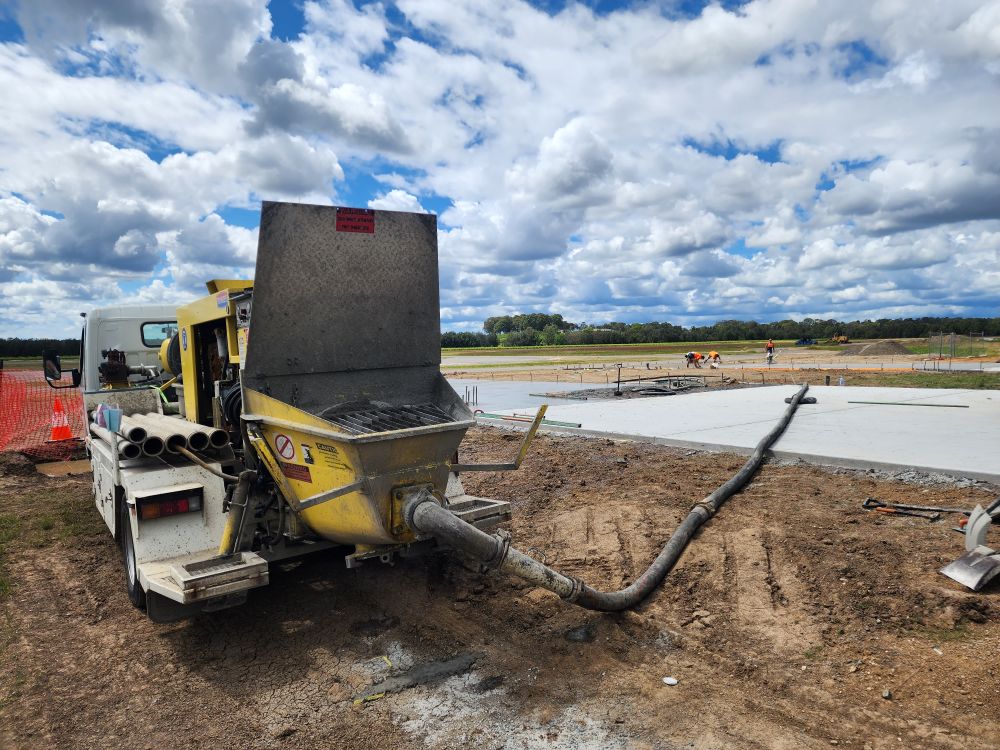Key Factors to Assess When Choosing Between Line Pump and Boom Pump Hire
To ensure you make an informed choice regarding the most appropriate concrete pump for your construction project, it is vital to grasp the fundamental differences between line pumps and boom pumps. Line pumps are particularly beneficial for residential projects and locations that present challenging access, whereas boom pumps are engineered to manage high-volume concrete pours and can efficiently cover extensive distances. When determining which pump to hire, it is essential to evaluate critical elements such as site accessibility, pour size, and the desired delivery speed. By thoroughly considering these factors, you can confidently select the pump that aligns with your unique project specifications.

Discover the Benefits of Line Pumps for Your Concrete Construction Projects
Line pumps are specifically engineered to transport concrete through a system of steel pipes or flexible hoses with remarkable efficiency. This makes them particularly advantageous for residential construction sites, backyards, footpaths, and other spaces where access can be difficult. Their compact design, paired with rapid setup capabilities, renders them an optimal choice for smaller pours, allowing you to maximise efficiency without sacrificing quality. By choosing to utilise line pumps, you can significantly lessen the dependency on barrows and reduce labour costs on projects where a boom truck may encounter challenges reaching the pour area. This decision streamlines your workflow while conserving both time and resources.
Enhance Project Efficiency with Line Pumps in Confined Work Areas
In scenarios where space is limited, line pumps offer a dependable solution for transporting concrete using flexible hoses. Construction teams frequently employ these pumps for residential slabs, footings, and smaller pours that larger boom trucks often find difficult to access. Their swift setup time and reduced operational costs make them an excellent choice for projects situated in tight spaces, such as narrow driveways and crowded streets. By opting for a line pump, you can ensure that your project proceeds smoothly, avoiding the delays and complications that usually stem from utilising larger machinery in constrained environments.
Recognise Ideal Situations for the Implementation of Boom Pumps
Boom pumps are mounted on trucks and equipped with extendable arms that can reach over structures, into foundations, or to elevated areas within formwork. This functionality makes them perfectly suited for commercial sites, large slabs, or any high-volume pours where efficiency is paramount. Using a boom pump can yield considerable time savings, as operators can control the precise placement of concrete using remote controls, which not only minimises labour costs but also reduces material waste. If your project necessitates a considerable volume of concrete and extensive reach, a boom pump is undoubtedly the most effective tool to meet your requirements efficiently.
Crucial Tips for Choosing the Ideal Concrete Pump for Your Specific Project
- For small to mid-sized pours: Choose a line pump to take advantage of its efficiency and cost-saving benefits.
- For large slabs or commercial projects: Always opt for a boom pump to effectively manage the required volume of concrete.
- In confined job sites: A line pump represents the perfect solution for access where boom pumps cannot operate effectively.
- When needing to reach over structures: A boom pump can cover significant distances quickly and efficiently, ensuring timely project completion.
Empower Your Decision-Making with Hunter Concrete Pumps for Optimal Results
Begin your selection process by conducting a thorough assessment of your site conditions. If access is limited or the pour volume is relatively small, a line pump is typically the most efficient and cost-effective choice. However, for larger projects that involve multi-storey buildings, extensive infrastructure tasks, or substantial concrete pours, a boom pump excels in delivering higher volumes of concrete swiftly, effectively eliminating the need for excessive handling and potential delays.
In the Hunter Valley and Newcastle regions, it is common to see line pumps employed for projects such as driveways, footings, and pool constructions. Conversely, boom pumps are often preferred for tasks that require high volumes of concrete or significant vertical reach, including bridge decks, multi-storey buildings, and industrial pads. By understanding these specific applications, you can make the most informed decision regarding your concrete pumping requirements.
The Article: Line Pump vs Boom Pump: Choosing the Best for Your Build first appeared on https://writebuff.com
The Article Line Pump vs Boom Pump: Which Is Best for Your Project? Was Found On https://limitsofstrategy.com
The Article Line Pump vs Boom Pump: Choosing the Right Option for You found first on https://electroquench.com
